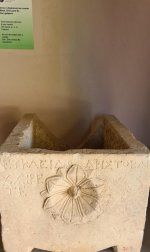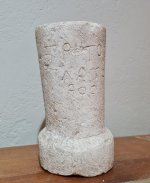So Proto-Albanians are E-V13 Channeled Ware Thracians + R1b-M269 Paeonian Brygians who took on J2b2 Illyrian language, culture, and burial rites? Lol
Where's all the linguistic links to Thracian? Why do we have so many more links to Illyrian? Haplogroup frequencies change over time, Illyrians are a mountain people, J2b2 is highest in the mountains, E-V13 and R1b more common in the lowlands
Is it easier to grow communities in the mountains, or in the lowlands? It's easier to grow large communities in lowlands, hence why E-V13 and R1b are more common than J2b2.
Look at any place on earth, CITIES have more people than RURAL AREAS. Woe to the Neo-Illyrians from the Trojan-Dardanian plains, they want to live in fantasy.
Why do scholars say Albanians have roughly the same components from the Bronze Age to current times, why are we closer to HRV_IA than Bulgaria IA? We are literally pulled in the direction of the West Balkans, not the East Balkans. Why do Byzantine Epirotes and Ancient Macedonians overlap with Albanians? Why aren't those Macedonians pulled into the direction of Thrace? Epirotes and Macedonians intermarried with ILLYRIANS. Why does Albanian match Messapic, and why do scholars put it together in a branch with Illyric and Albanian?
Truly amazing, this need, from the Neo-Illyrians to be from somewhere far away east. Why do ancient sources say that the Dardanians were Illyrian, and that the Paeoni were Illyrian influenced? Even the Maedi and Triballi are said to have Illyrian influence, but noooo, the Neo-Illyrians, and Riverman, think that J2b2 was only confined to a thin line on the Adriatic coast

Like I said before, we need to test Bosnia, Southern Serbia, Kosova, and we need more samples from Montenegro (in the North of MNE where J2b2 and E-V13 could have met as it's more close to Central Balkans, Doclea is pure Illyrian territory in Ancient times)
Once we test these areas then we can start drawing more accurate conclusions to please the Neo-Illyrians. When we find E-V13 there, what will that mean? That these Thracians stopped cremating and took on an Illyrian burial rite. It seems much more likely that Proto-Albanians come from somewhere within the square of Croatia-Serbia-Albania-Macedonia. All the current data does not suggest we come from a square of Serbia-Romania-Macedonia-Bulgaria. It's amazing how it's only Kosovars who support this nonsense. They want to feel "special" and withdrawn from Albania, even though the data points for our origin in the West Balkans, by genetics, culture, and linguistics. Their false rhetoric is what Serbs and Greeks are foaming at the mouth for, to confirm their propaganda of Albanians being some new population that just popped out of the woods somewhere East.




